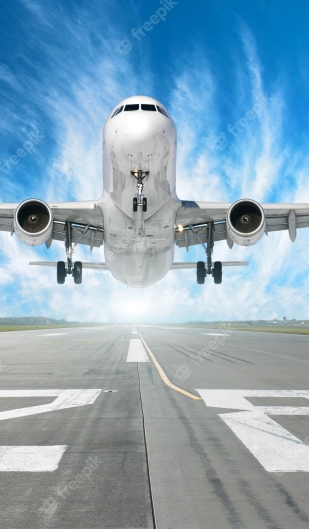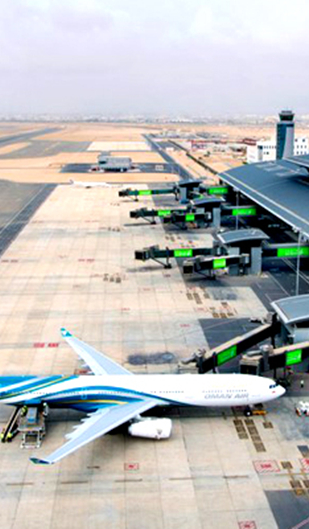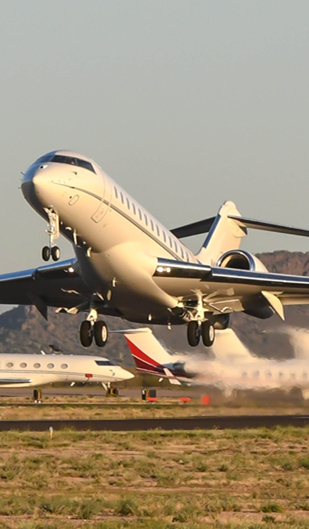Please learn the comparative efficacy test between Pestman cockroach gel bait and Advion cockroach gel bait by the following video.
↓↓↓↓↓scroll down the web to view videos↓↓↓↓↓
![]()
![]() Public Hygiene Pest Control
Public Hygiene Pest Control
![]()
![]() Agriculture Pest Control
Agriculture Pest Control

Birds pose a significant risk to aviation safety. In some cases, a bird or a group of birds unexpectedly taking flight from a runway or its surroundings may collide with an incoming or departing aircraft, potentially resulting in a catastrophic crash and loss of human lives. This occurrence is commonly referred to as a "bird strike."
The damage caused to an aircraft usually arises from a collision between one or more birds and the engines and/or fuselage. Although most bird strikes do not lead to crashes, they often result in costly structural and mechanical damage to the aircraft. The global prevalence of this issue makes bird strikes a substantial economic concern.
Since the inception of powered flight, birds have always posed a threat to aircraft. In the early stages of aviation, when planes flew at slower speeds, birds had little trouble evading them. Bird strikes were infrequent, and damage was typically limited to cracked windshields. The likelihood of losing an aircraft or endangering human lives was minimal. However, with the progression and introduction of jet aircraft, bird strikes have become a serious hazard and an expensive problem. Greater speeds leave birds with less time to react to approaching aircraft, and the force generated by a bird colliding with a fast-moving plane is significant. Additionally, modern turbine engines employ lightweight and high-speed mechanical components that are particularly susceptible to damage from bird strikes.
There are many ways to repel birds at airport. However,airports have learned through experience that some techniques to prevent bird hazards simply don’t work. Humans have used their intelligence to come up with ways to repel airport birds. However, there's no need to think of so many different methods when you can simply use Pestman bird repellent and its accompanying solutions to address the bird issues at airports. Pestman bird repellent is an environmentally friendly and pollution-free slow-release biological preparation specially developed for repelling birds at airports by using biologically sourced active materials and applying modern biotechnology. The principle of repelling birds is to use the allergic reaction, anorexia reaction, and rejection reaction caused by the physiological aversion mechanism of the active ingredients of biological raw materials in the sense of smell, taste,and touch, so that it can be used in the memory period of harmful birds. Escape and avoid the place where Pestman bird repellent is applied, so as to achieve the purpose of repelling birds, which is humane and does not harm birds.
What can we do for you?
1.Excellent bird control product.
2.A whole airport bird control program.
3.Professional technical team to provide after-sales support.
4.Adjust product formulation according to local environment and bird species for better results.

The repair costs for aircraft damaged by bird strikes are significant. Bird and other wildlife strikes result in over $650 million in damages to both civilian and military aviation in the United States every year. Furthermore, bird strikes pose a risk to the lives of crew members and passengers, with over 200 people worldwide having been killed as a result of wildlife strikes since 2008. The high rotational speed turbine engine fans and compress makes them susceptible to damage even at low aircraft speeds. Damaged blades lead to power loss and generate unbalanced forces, which can cause engine shutdown.
No two airports are exactly alike. Accordingly, bird hazards vary from airport to airport, even when the same species are involved. The occurrence of birds at airports varies according to habitat availability, weather, season of year, and time of day.
Food: Birds require relatively large amounts of food. Most airports support an abundance and variety of foods such as seeds, berries, grass, insects, grubs, earthworms, small birds, and small mammals. Seeds and berries are sought by several migratory and resident birds such as sparrows, finches, starlings, blackbirds, mourning doves, common pigeons, and waterfowl. Geese are attracted to open expanses of grasses. Gulls, starlings, robins, and crows often feed on earthworms on the surface of the ground following a rain. Gulls are opportunistic feeders and frequently feed on grasshoppers and ground nesting birds. Raptors are attracted to airports because of rodents, birds, and other small animals that harbored by tall, poorly maintained grass stands and borders. Occasionally, food becomes available through careless waste disposal practices by restaurants and airline flight kitchens. Airport personnel have been known to feed birds during their lunch breaks. Many airports have inadequate garbage disposal systems that permit access to various food items. These are a favorite of several species of birds, especially gulls. Nearby landfills or sewage outlets may also provide food for birds and other wildlife. Landfills are often located on or near airports because both are often built on publicly owned lands. In these circumstances, landfills contribute to bird strike hazards by providing food sources and loafing areas that attract and support thousands of gulls, starlings, pigeons, and other species. Generally, landfills are a major attraction for gulls, the most common bird involved in bird strikes. Waste paper, paper bags, and other litter blowing across the ground attract gulls, presumably because litter is mistaken for other gulls or for food. A gull that is attracted to litter decoys other gulls and encourages flocking.
Water: Birds of all types are drawn to open water for drinking, bathing, feeding, loafing, roosting, and protection. Rainy periods provide temporary water pools at many airports. Many airports have permanent bodies of water near or between runways for landscaping, flood control, or wastewater purposes. These permanent sources of water provide a variety of bird foods, including small fish, tadpoles, frogs, insect larvae, other invertebrates, and edible aquatic plants. Temporary and permanent waters, including ponds, borrow pits, sumps, swamps, and lakes, attract gulls, waterfowl, shorebirds, and marsh birds. Fresh water is especially attractive in coastal areas.
Cover: Birds need cover for resting, loafing, roosting, and nesting. Trees, brushy areas, weed patches, shrubs, and airport structures often provide suitable habitat to meet these requirements. Almost any area that is free from human disturbance may provide a suitable roosting site for one or more species of birds. Starlings, pigeons, house sparrows, and swallows often roost or nest in large numbers in airport buildings or nearby trees, shrubs, or hedges. Large concentrations of blackbirds and starlings are attracted to woody thickets for winter roosting cover. Gulls often find safety on or near runways of coastal airports when storms prevent their roosting at sea, on islands, or on coastal bays.
Migration: Many airports are located along traditional annual bird migration routes. Birds may suddenly appear in large flocks on or over an airport on their annual migration, even when the airport itself offers no particular attraction. Dates of migration vary by species and area. Flock size of a given species may vary widely from year to year depending on time of year, weather conditions, and many other factors.
Damage Prevention and Control Methods
Bird strike hazards reoccur regularly at many airports and require constant attention. Before attempting to reduce bird hazards at an airport, it is important to assess the problem, identify contributing factors, and analyze the threat to aircraft and human safety. A wildlife hazard management plan should be implemented (and may be required by FAA) to make the airport unattractive to birds. Scaring or dispersing birds away from airports is usually difficult because birds are tenaciously attracted to available food, water, and cover. As long as these attractants exist, birds will be a problem.
In most situations, a wildlife biologist trained in bird hazard assessment should be selected to conduct a thorough ecological study of the airport and its vicinity. The study should determine what species of birds are involved, what attracts them, abundance and peak use periods and special hazard zones. It should also include control recommendations to reduce the frequency of bird occurrence at the airport.
Habitat Modification
Several habitat management practices can make an airport less attractive to birds. These include eliminating standing water, removing or thinning trees, removing brush and managing grass height. Buildings can be modified to reduce or eliminate roosting or nesting sites.
Frightening
Frightening is a reliable and expeditious means of repelling birds. Frightening programs, however, provide only temporary relief and require constant monitoring. An early priority in reducing bird hazards is to establish a bird dispersal patrol team to harass and scare birds and provide immediate protection for aircraft within the airport perimeter. The patrol team must consist of highly motivated and knowledgeable personnel with adequate equipment, such as radio-equipped vehicles, shotguns, and frightening devices consisting of bird distress calls, live ammunition, and pyrotechnic devices (automatic gas exploders, shellcrackers, and racket bombs). Patrol personnel must be trained in bird identification and dispersal methods. Clear communication between the patrol team and the control tower is essential. Birds react to unfamiliar sounds and objects. They learn, however, to ignore sounds and objects that have proven harmless, especially if they are used often and for long periods of time. Birds should not be allowed to acclimate to a scare device through repeated exposure without an associated adverse effect. The use of shooting to reinforce frightening techniques can be effective and should occur simultaneously with the scare devices often enough to maintain fear in the birds. In most cases, an integrated approach that incorporates several frightening devices will produce the best results.
The shellcracker fires a projectile from a 12-gauge shotgun. It travels up to 100 yards (90 m) and explodes with a loud noise and a flash. Noise bombs are similar and can supplement shellcrackers, but their range is much shorter. Racket bombs are propelled by a special pistol and travel approximately 100 yards (90 m); they do not explode.
Shellcrackers and racket bombs may lose their effectiveness when used frequently. It may be necessary to use live ammunition to kill an occasional bird. Remaining birds then become more responsive to the noise devices. Remember that a permit is required to take protected species.
Distress calls are sounds emitted by birds under conditions of stress. The calls can be recorded on tape cassettes and played through a loudspeaker located on the patrol vehicle. Distress calls supplement shellcrackers and noise bombs.
Automatic exploders or gas cannons, operated by acetylene, propane, or LP gas, produce a noise louder than a shotgun blast. Exploders can be set up and left to operate continuously, but for best results, the exploders should be operated for limited periods of time only, unless birds are moving into the airport. Exploders should be moved periodically so that the birds do not become accustomed to the blasts.
Repellent
Research has been conducted on the efficacy of for repelling gulls and waterfowl from standing pools of water on airport runways. Bird repellent which contains methyl anthranilate is a wise choice to reduce bird strikes at airports.
Pestman bird repellent contains 10% methyl anthranilate and is an environmentally friendly slow-release biological preparation specially developed for repelling birds at airports by using biologically sourced active materials and applying modern biotechnology. The principle of repelling birds is to use the allergic reaction, anorexia reaction, and rejection reaction caused by the physiological aversion mechanism of the active ingredients of biological raw materials in the sense of smell, taste,and touch, so that it can be used in the memory period of harmful birds. Escape and avoid the place where Pestman bird repellent is applied, so as to achieve the purpose of repelling birds, which is humane and does not harm birds.

Bird problem is a serious hazard to aviation. A bird or a flock of birds that suddenly rises from a runway or surrounding area may collide with incoming or departing aircraft and cause the aircraft to crash, possibly resulting in the loss of human life. Bird collision with aircraft is commonly known as “bird strike.”
Damage caused to aircraft usually results from collision of one or more birds with the engines and/or fuselage. Although most bird strikes do not result in crashes, they do involve expensive structural and mechanical damage to aircraft. The incidence of this problem worldwide makes bird strike a serious economic problem.
Birds have been a hazard to aircraft from the first powered flight. During the early days of aviation, when aircraft flew at slow speeds, birds had little difficulty in getting out of the way. Bird strikes were infrequent and damage was mainly confined to cracked windshields. The likelihood of the loss of aircraft and/or human lives was remote. With the development and introduction of jet aircraft, bird strikes became a serious hazard and costly problem. Faster speeds mean birds have less time to react to approaching aircraft. The force generated by bird impact with a fast-moving aircraft is tremendous. The newer turbine engines use light-weight, highspeed mechanical parts which are vulnerable to bird strike damage.
There are many ways to repel birds at airport. However,airports have learned through experience that some techniques to prevent bird hazards simply don’t work. Humans have used their intelligence to come up with ways to repel airport birds. However, there's no need to think of so many different methods when you can simply use Pestman bird repellent and its accompanying solutions to address the bird issues at airports. Pestman bird repellent is an environmentally friendly and pollution-free slow-release biological preparation specially developed for repelling birds at airports by using biologically sourced active materials and applying modern biotechnology. The principle of repelling birds is to use the allergic reaction, anorexia reaction, and rejection reaction caused by the physiological aversion mechanism of the active ingredients of biological raw materials in the sense of smell, taste,and touch, so that it can be used in the memory period of harmful birds. Escape and avoid the place where Pestman bird repellent is applied, so as to achieve the purpose of repelling birds, which is humane and does not harm birds.
What can we do for you?
1.Excellent bird control product.
2.A whole airport bird control program.
3.Professional technical team to provide after-sales support.
4.Adjust product formulation according to local environment and bird species for better results.